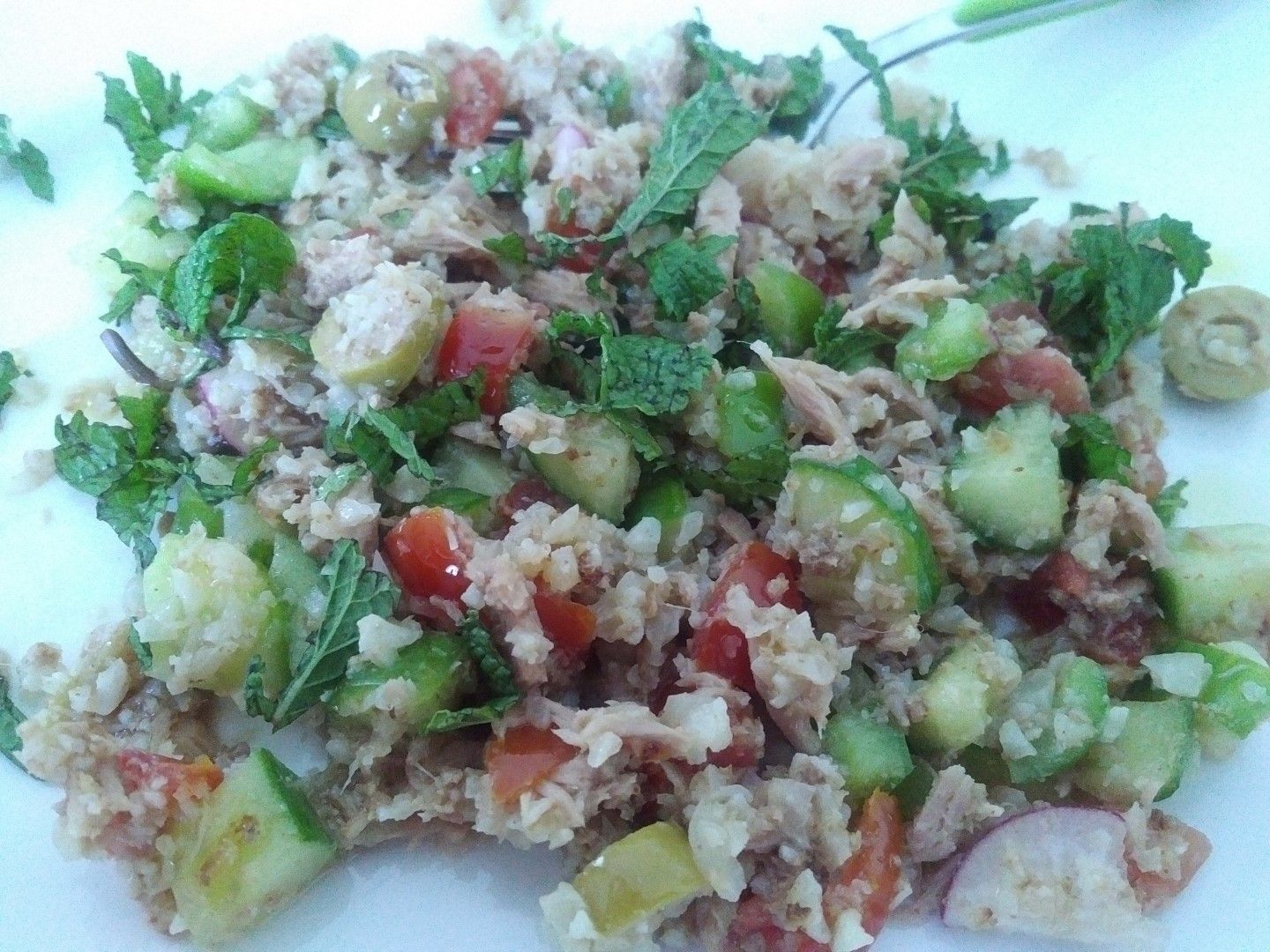Trying to cut down on carbs and increasing your vegetable intake? If you are staying at home and exercising less, this might be just what you are looking for. Cauliflower rice is a quick and easy solution which has become “trendy” in recent years. Despite the name, which might bring visions of a yet to discover food, it is simply cauliflower pieces that resemble rice. This means you can use it to replace brown rice in your recipes. It’s also much quicker to cook and has numerous health benefits. I’ll also let you into a little secret. It is very easy to prepare at home. You do not need to spend outrageous amounts of money buying it “ready-made” in the shops in the frozen section. (I am still reeling from the shock of seeing that there!). Save money and time as well as that waistline…. Here’s all you need to know.
Health benefits of cauliflower
Remember how you keep reading that cruciferous vegetables are the healthiest for their anti-cancer properties …. For some reason the image that comes to my mind is always a head of broccoli. I love broccoli, but not every day. Cauliflower is also a member of the cruciferous club and it is very versatile. One head of cauliflower can be the basis of a healthy meal for a whole family on a tight budget, which is good news in itself.
Cauliflower is high in fibre (constipated? Want to feel fuller faster on less kcals?), rich in vitamin B, and contains choline which helps learning and memory (still studying from home?). It helps strengthen bones and can boost your cardiovascular system.
In fact, according to the Centre for Disease Control and Prevention (CDC), cauliflower is 24th on the list of “Powerhouse Fruits and Vegetables” (PVFs) - more of those in another blog post. (In case you are interested Kale is 15th and broccoli is 19th on the same list.) This means it provides more than 10% of the daily value per 100 kcals of 17 key nutrients.
The 17 key nutrients
These 17 key nutrients are defined by the Food and Agriculture Organization (FAO) of the United Nations and Institute of Medicine as “of public health importance”. We all need these not just for health and wellbeing, but to survive. The list is as follows (in no particular order):
1 potassium
2 fibre
3 protein
4 calcium
5 iron
6 thiamin
7 riboflavin
8 niacin
9 folate
10 zinc
11 vitamin A
12 vitamin B6
13 vitamin B12
14 vitamin C
15 vitamin D
16 vitamin E
17 vitamin K
The study of PVFs mentioned above, was based on 47 foods to determine how nutrient rich they were. Their findings are interesting also in what foods they studied that did not meet the criteria of PFVs, raspberry, garlic and blueberries among them.
Nutritional Values of Cauliflower
Back to our cauliflower…. 100 grams of cauliflower contain approximately the following:
27 kcal
2 g of protein
0.3 g of fat
5 g carbohydrates (of which 2.1g fibre and and 2g of sugar)
24 mg calcium
16 mg magnesium
47 mg phosphorus
320 mg potassium
51.6 mg vitamin C (this is 77% of the Daily Recommended Amount)*
16.6 mcg vitamin K (this is 20% of the DRA)
0.197 mcg vitamin B6 (this is 10% of the DRA)
61 mcg folate
*The RDA is based on a diet of 2000Kcals per day.
Cauliflower also contains smaller amounts of thiamin, riboflavin, niacin, pantothenic acid, iron and manganese. However, a word of caution, if you are on blood thinners or have problems with blood clotting it is not advisable to consume large doses of cauliflower in one go as the vitamin K content can interfere with this, talk to your doctor first!
How to make your own cauliflower rice
As with everything in life, apparently you can buy already prepared cauliflower rice. It’s sold frozen as once you have riced your cauliflower, even if you keep it in an airtight container in the fridge it will smell mouldy very very quickly. It is best to prepare a whole batch just before you need it, and of course you can simply take the rest and freeze it yourself and use as needed.
You will need:
a head of cauliflower
a grater or food processor
a pinch of salt
a little olive oil
Method
1. Wash the cauliflower head in a bicarbonate and water soak for about 10 minutes. Rinse and pat dry with some kitchen towel before separating the florets from the stalk and leaves.
2. Grate the florets by hand or use the cheese grater setting of your food processor. This will be quite fast and you’ll end up with pieces of cauliflower that resemble grains of rice (hence the name).
3. Squeeze and dry out the moisture, or dry roast in a pan or the oven for a couple of minutes until any excess water/moisture has dried up. You can then spray a little olive oil and seasoning (and continue cooking for a few minutes until tender but still firm.
How to use cauliflower rice
Once cooked, you can use the cauliflower rice as the basis of a “rice” salad, or any other dishes that normally require (brown) rice. Alternatively, you can let it cool down and then place in a container suitable for freezing and freeze it until needed.
You can use the stalk and any leftover parts in soups. Don’t throw it away. It’s just as tasty and nutritious.
Even if you do not normally like the taste of cauliflower, this should still work for you as it will not be nearly as potent as a cauliflower soup or large baked cauliflower.
I turned my first batch into a tuna cauliflower rice salad, with tomatoes, cucumbers, mint, radish and olives. I look forward to hearing how you all used your cauliflower rice!
Stay safe, stay healthy.


